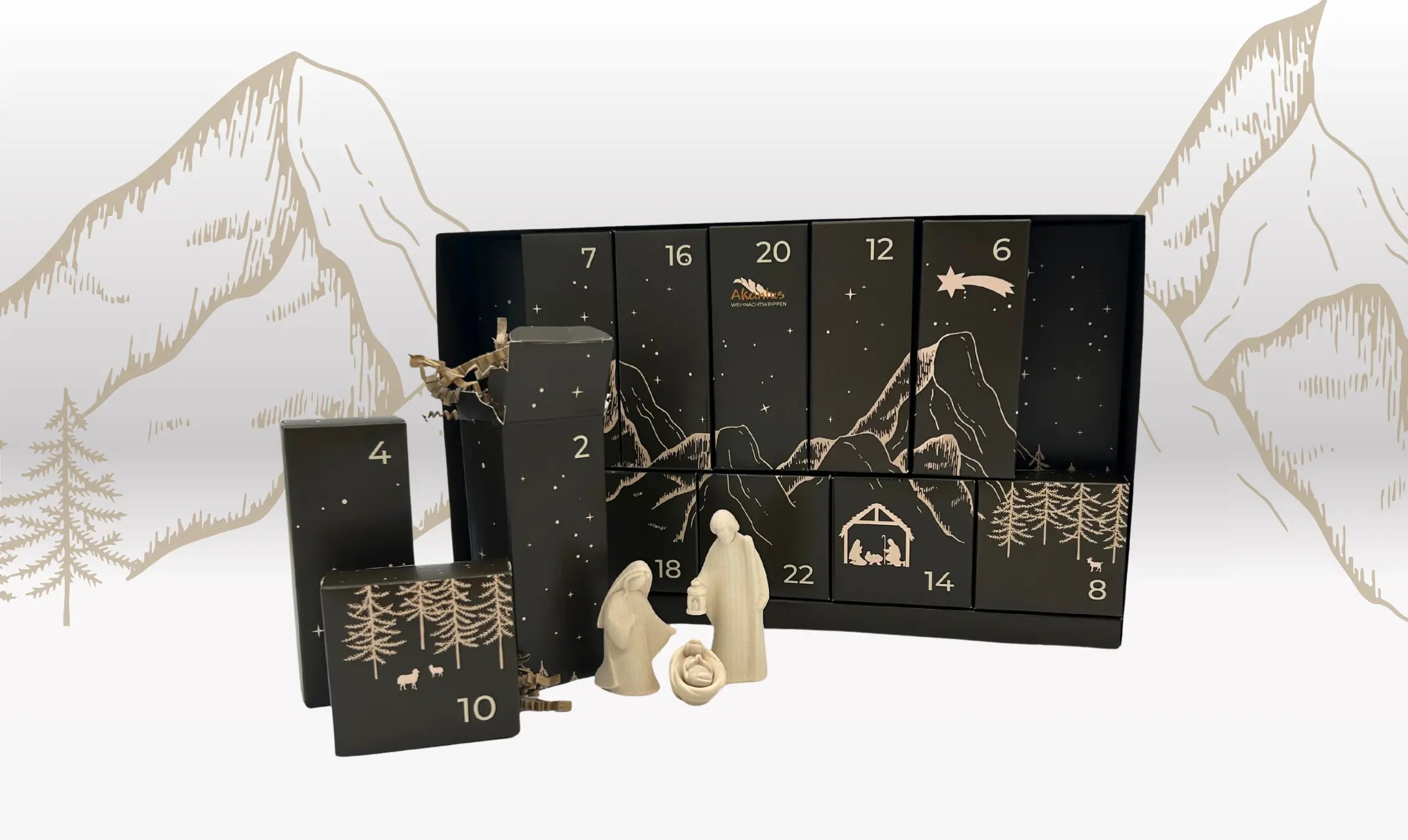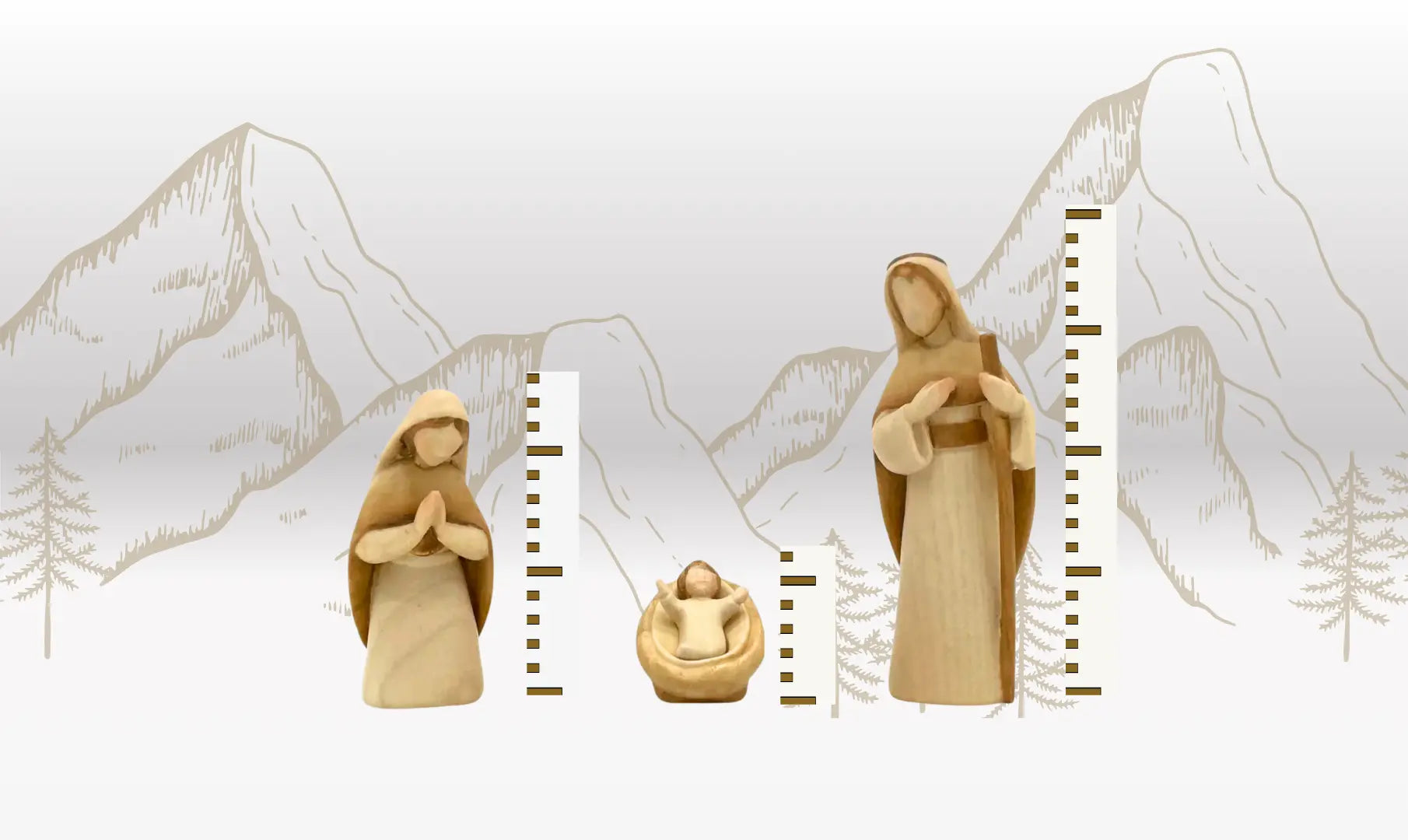
Where does the tradition of the Advent calendar come from?
The Advent calendar has become an indispensable part of the pre-Christmas period. It makes the wait until Christmas Eve more pleasant for children and adults and increases the anticipation of Christmas. But where does this tradition actually come from?

The origins of the Advent calendar
The tradition of the Advent calendar has its roots in the 19th century. Originally, it was common in Protestant households to count the days until Christmas by hanging a picture on the wall or drawing chalk marks on the door each day. These simple forms of counting served to increase the anticipation of Christmas.
The first commercial Advent calendar
The first printed Advent calendar was published in 1902 by a Protestant bookseller in Hamburg. However, Gerhard Lang, a publisher from Munich, is considered the actual inventor of the modern Advent calendar. Inspired by his mother, who sewed 24 biscuits onto a cardboard box for him as a child, Lang produced the first commercial Advent calendar in 1908 with small pictures that could be cut out and glued on.
Development in the 20th century
Over the course of the 20th century, the Advent calendar continued to develop and became increasingly popular. During the First World War and the post-war period, printed Advent calendars were a welcome change from the dreary everyday life. In the 1920s, Advent calendars with doors that concealed pictures or sayings became popular. In the 1950s, the first Advent calendars with chocolate came onto the market.
Modern Advent Calendars
Today, there are countless variations of Advent calendars : from classic picture calendars to chocolate calendars to elaborately designed calendars with toys, cosmetic items or, as in our case, with a complete nativity scene. There are no limits to creativity and the tradition has spread worldwide. Despite this variety, the core of the Advent calendar remains the same: to increase the anticipation of Christmas day by day.


